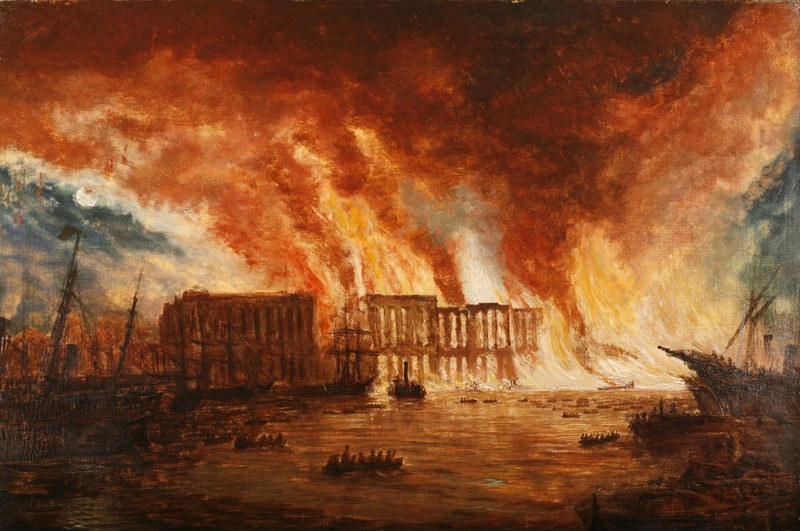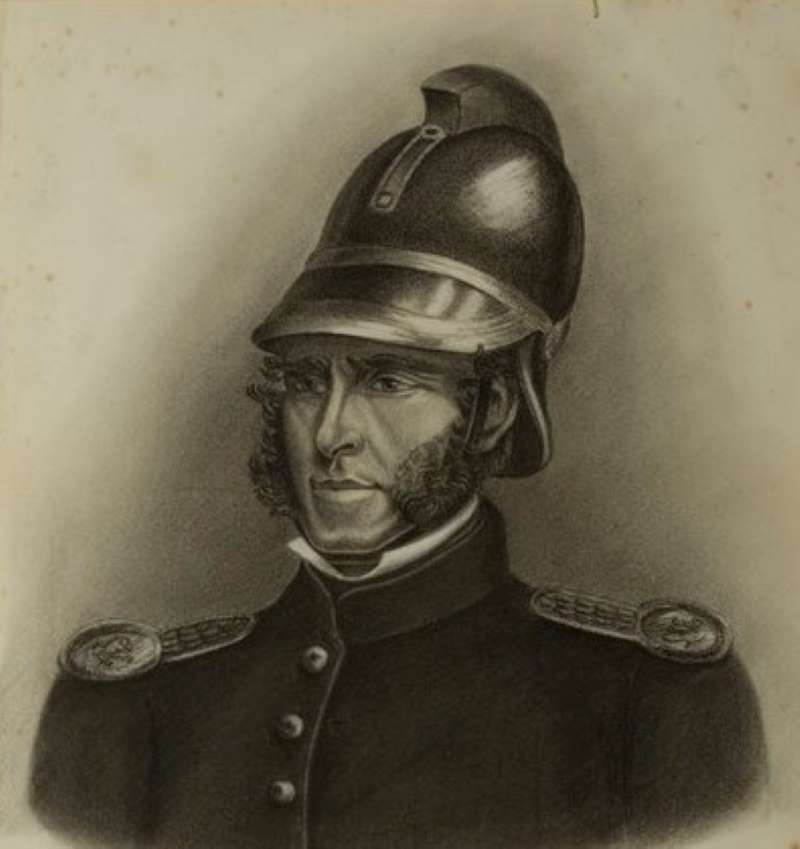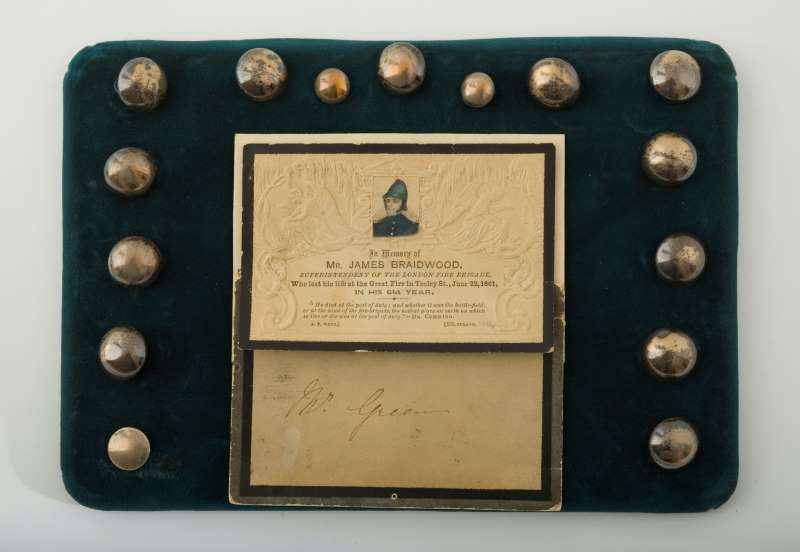
It began on the afternoon of Saturday, 22 June 1861 at Cotton's Wharf, where many warehouses were situated. The buildings were filled with an huge array of goods, including jute, hemp, cotton, spices, tea and coffee.
The London Fire Engine Establishment (LFEE) were quick to get to the scene. By 6pm 14 fire engines, including a steam fire engine and a floating engine (fire-float), were all fighting the blaze.
It is thought the fire started by spontaneous combustion... and it caused a huge commotion.
Right: The Tooley Street fire from the River, Oil on canvas, artist unknown
...every inch of room on London Bridge was crowded with thousands and thousands of excited faces

By late evening the fire stretched from London Bridge to Custom House... the closely packed wharves were loaded with flammable goods.
The fire spread quickly throughout the warehouses as the iron fire doors, which separated many of the storage rooms, had been left open.
It is believed if they had been closed, as recommended by James Braidwood the Superintendent of the LFEE, the fire may have burnt out, avoiding disaster.
Left: Printed portrait of LFEE Superintendent James Braidwood
Another reason it has been suggested the fire was able to burn so fiercely because firefighters were unable to get a supply of water for nearly an hour – the Thames was at low tide making it even more difficult to fight the fire.
By the late evening the fire stretched from London Bridge to Custom House. It was so hot the firefighters could not get close enough to squirt the necessary amount of water onto blaze to subdue the flames.
Vendors of ginger beer, fruit and other cheap refreshments recorded a roaring trade. And the pubs remained open throughout the night – even though this was forbidden in an Act of Parliament.
Braidwood noticed firefighters tackling the blaze were becoming tired and ordered every firefighter receive a ‘nip’ of brandy. While he was assisting one of his firefighters, the front section of a warehouse collapsed on top of him, killing him instantly. It was three days before firefighters were able to recover Braidwood's body due to the intensity of the flames
Queen Victoria wrote in her diary "it made one very sad" upon hearing the news of the LFEE Superintendent’s passing
Engines from all over the country arrived to help the LFEE, including private works brigades.
It took two weeks to extinguish the fire and cost an estimated £2 million – mainly due to the contents of the warehouses. That would be around £166 million today!
The cost for the pumpers, the people helping to pump water from the manual fire engines amounted to £1,100 – around £90,000 in today's money.

James Braidwood was buried at Abney Park Cemetery on 29 June 1861. He was buried alongside his stepson, who was also a firefighter and had been killed in a fire five years prior.
The funeral procession was a mile and a half long and shops were closed with crowds lining the route. As a mark of respect, every church in the city rang its bells. The buttons and epaulettes from his tunic were removed, and distributed to LFEE firefighters – these are part of the museum's collection today.
Left: Buttons from Superintendent James Braidwood's uniform mounted with his mourning card
Insurance companies raised their premiums and insisted on better storage of products in warehouses.
However, in 1862, the insurance companies wrote to the then Home Secretary stating they could no longer be responsible for the fire safety of London as they had often put out fires without charge. They felt it was something that should become a public authority.
The LFEE had been efficient but it was much too small for a growing city such as London.
The Metropolitan Fire Brigade Act was passed in 1865, and that stated from 1 January 1866 the Metropolitan Fire Brigade would commence as a public service – the first modern fire brigade was born.